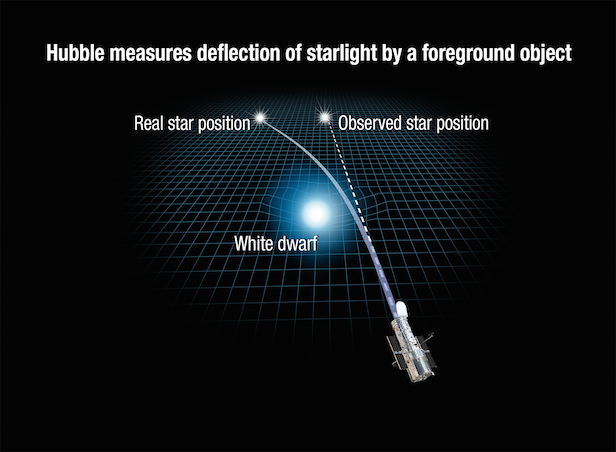New confirmation of Einstein’s general theory of relativity
Einstein predicted gravitational lensing over one hundred years ago

Since its launch in 1990, NASA’s Hubble Space Telescope has revolutionised space exploration. Image credit: NASA
Hubble observed a white dwarf star move in front of a background star, which caused the background star to move position ever so slightly. This proves that the occurrence of ‘gravitational lensing’, a phenomenon based on Einstein’s General Theory of Relativity and allows astronomers to calculate the mass of the white dwarf, using a completely new method.
Einstein’s general theory of relativity is the gift that keeps on giving. In 1915 Albert Einstein predicted that massive stellar objects, due to the intense gravity, could bend light. Four years later, it was proven true, when astronomer Sir Arthur Eddington observed light bending around our Sun, thus providing solid evidence for the general relativity theory. Gravitational lensing has been a strong area of interest in recent years, as we now have the technological capability to directly image such an effect outside of our Solar System.

This illustration shows how Hubble detects the gravitational lensing effect on a star. Image credit: NASA/ESA/A. Field (STScl)
This white dwarf, labelled Stein 2051 B, is massive enough to warp space around it, as it is an extremely dense remnant of the main sequence star (like our Sun), present after a supernova explosion. Using the Hubble Space Telescope, astronomers monitored the background star position as a white dwarf passed in front of it; from this astronomers can calculate the white dwarf’s mass. Hubble’s Wide Field Camera 3 observed Stein 2051 B on its path, and detected the background star move by 2 milliarcseconds from it’s original position. To put this into perspective, this detection is so small, it’s like catching an ant move a penny from 1,500 miles away.
This research is testament to the capabilities of modern telescopes, and now paves a new path to how we calculate the mass of large stellar objects. The James Webb Space Telescope being launched in 2018, and it will double the mirror size and therefore far superior light collecting capabilities. With such advancements can only bring more precise and accurate data, meaning we may use this method more in the near future.
Keep up to date with the latest space news in All About Space – available every month for just £4.99. Alternatively you can subscribe here for a fraction of the price!




